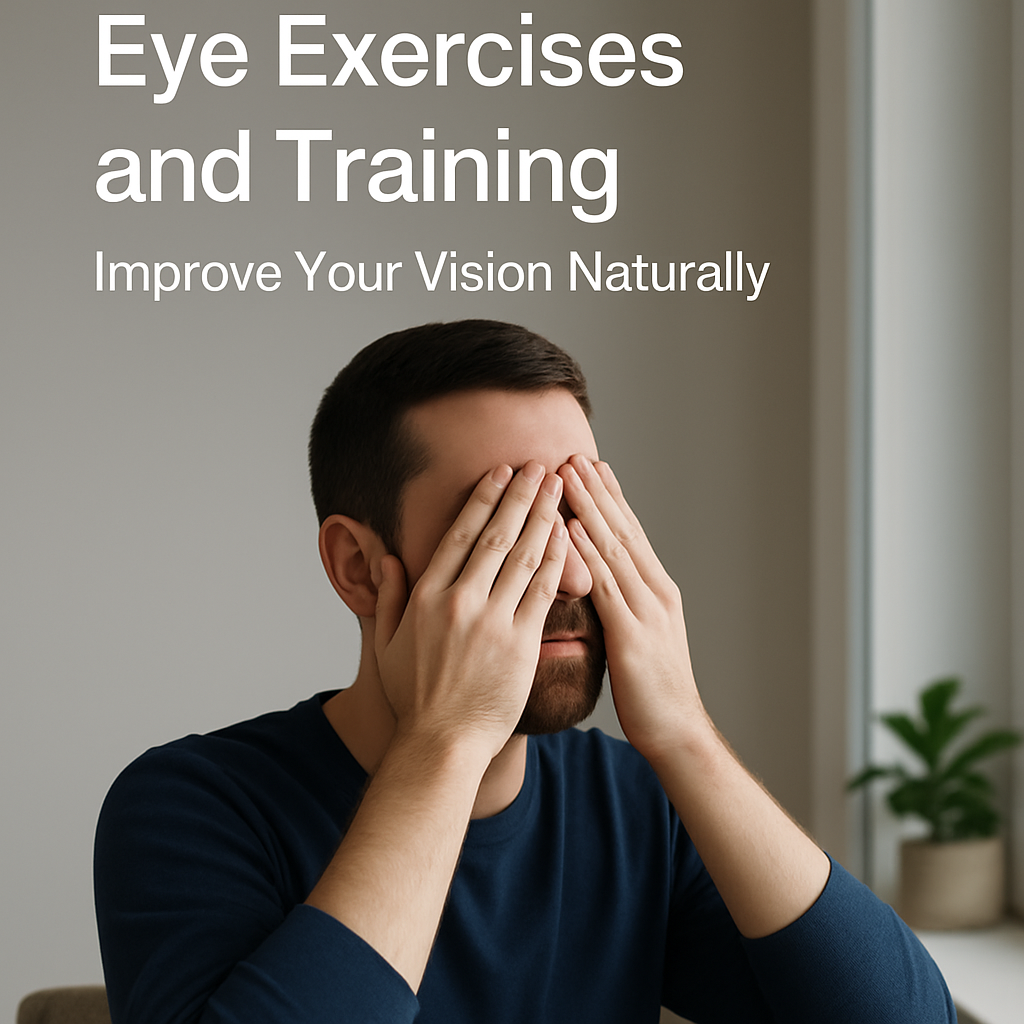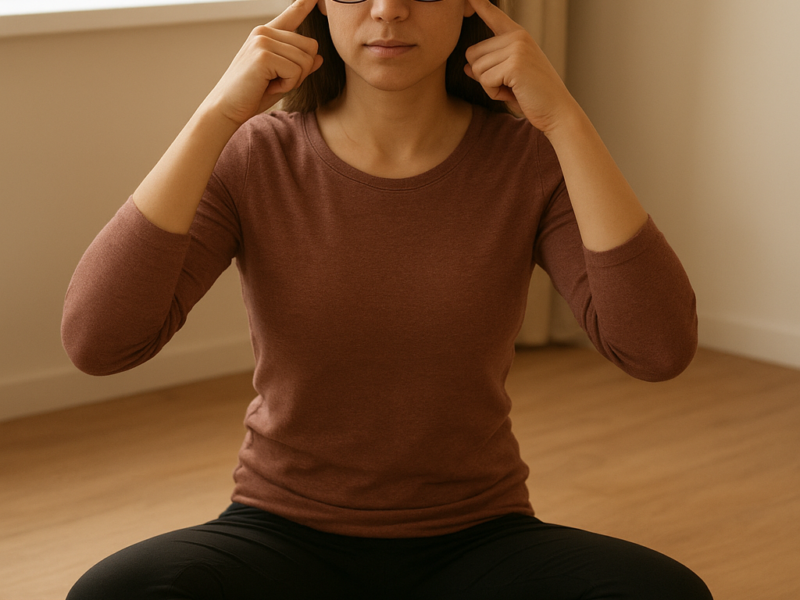Introduction: Why Eye Exercises Matter
In today’s digital world, most of us spend long hours staring at screens — whether for work, study, or entertainment. This lifestyle has led to a rise in digital eye strain, blurred vision, and headaches. While corrective lenses and medical treatments are essential for some conditions, many people overlook the power of simple eye exercises and vision training.
Eye exercises won’t cure serious eye diseases like glaucoma or cataracts, but they can:
- Reduce daily eye strain
- Improve focus and flexibility of the eye muscles
- Promote relaxation
- Support better posture and productivity
This article explores proven techniques, their benefits, and how to integrate them into your daily life.
👉 Related Reading: Digital Eye Strain: Causes, Symptoms, and Proven Prevention Tips
1. The Science Behind Eye Exercises
Your eyes are controlled by six extraocular muscles that work together to move them up, down, side-to-side, and diagonally. Like any other muscle, they can become strained with overuse. Eye exercises target these muscles, improving their coordination and flexibility.
Research shows that visual training can help improve focus, reading speed, and even reduce dependency on corrective lenses in specific cases (like convergence insufficiency).

2. Warm-Up for the Eyes: The Palming Technique
Palming is a classic relaxation method used in yoga for the eyes.
How to Do It:
- Rub your palms together to generate warmth.
- Gently cup them over your closed eyes without pressing.
- Breathe deeply and visualize darkness.
- Stay in this position for 1–2 minutes.
Benefits:
- Relieves tension in eye muscles
- Reduces digital strain
- Calms the nervous system
3. The 20-20-20 Rule
One of the simplest yet most powerful methods to protect your eyes while working on screens.
How It Works: Every 20 minutes, look at something 20 feet away for 20 seconds.
This gives your eye muscles a break from close-up focus and reduces fatigue.
👉 Related Reading: Blue Light & Screen Protection: How to Safeguard Your Eyes in the Digital Era
4. Eye Rolling and Figure Eight Exercise
Eye Rolling
- Sit comfortably, look straight ahead.
- Slowly roll your eyes in a circle clockwise, then counterclockwise.
- Repeat 5–10 times.
Figure Eight
- Imagine a giant “8” turned on its side (∞).
- Trace the figure with your eyes for 1–2 minutes.
Benefits:
- Improves flexibility of extraocular muscles
- Enhances coordination
5. Focus Shifting
This exercise strengthens the ciliary muscles responsible for focusing.
How to Do It:
- Hold your thumb 10 inches away from your face.
- Focus on it for 10 seconds.
- Shift focus to an object 20 feet away for 10 seconds.
- Repeat 10 times.
Benefits:
- Enhances near-to-far focus transition
- Reduces blur and eye fatigue

6. Near and Far Focus Cards
Print two cards: one with letters close together, one with larger spaced-out letters. Alternate reading them to train your eyes to adjust focus rapidly.
This technique is often used in vision therapy clinics for patients with focusing issues.
7. Eye Yoga: Trataka (Candle Gazing)
A traditional yoga practice that improves concentration and eye strength.
How to Do It:
- Place a candle at eye level, 3 feet away.
- Gaze at the flame without blinking for 15–30 seconds.
- Close your eyes and visualize the flame.
- Repeat 3–5 times.
Benefits:
- Improves attention and memory
- Enhances tear film stability
- Promotes calmness
👉 Related Reading: Nutrition for Vision: Essential Foods and Supplements for Healthy Eyes
8. Blinking Awareness Training
Screen time reduces natural blinking by up to 60%. Conscious blinking exercises restore moisture.
How to Do It:
- Set a timer for 2 minutes.
- Slowly close and open your eyes fully 10–15 times.
- Repeat every few hours at your desk.
Benefits:
- Reduces dry eyes
- Rehydrates the ocular surface
👉 Related Reading: Dry Eyes: Causes, Symptoms, Prevention, and Treatment
9. The Pencil Push-Up Exercise
Used in vision therapy to treat convergence insufficiency.
How to Do It:
- Hold a pencil at arm’s length.
- Focus on a letter or mark on the pencil.
- Slowly bring it toward your nose until it doubles.
- Move back and repeat 10 times.
10. Lifestyle Habits That Complement Eye Exercises
- Maintain proper screen ergonomics
- Get 7–8 hours of quality sleep
- Stay hydrated
- Add omega-3s, lutein, and zeaxanthin to your diet
- Limit continuous screen use
👉 Related Reading: Eye Care for All Ages: Essential Tips for Lifelong Vision Health
❓ Frequently Asked Questions (FAQ)
Q: Can eye exercises improve my vision permanently?
A: They help reduce strain, improve focus, and may assist with mild conditions, but cannot cure serious eye diseases.
Q: How often should I practice eye exercises?
A: Daily practice for 5–10 minutes provides the best results.
Q: Are eye exercises safe for everyone?
A: Yes, but if you have glaucoma, retinal issues, or recent surgery, consult your doctor first.
Q: Can exercises reduce my need for glasses?
A: They can improve focus and comfort, but not eliminate refractive errors like myopia or astigmatism.
Q: Do children benefit from eye exercises?
A: Yes, especially for focus and screen-related eye strain, but guidance from an eye care professional is recommended.
🔑 Key Takeaway
Eye exercises are a safe, natural, and effective way to reduce digital strain, relax tired eyes, and improve focus. Combined with healthy lifestyle habits and regular eye exams, they can make a big difference in maintaining lifelong vision health.


